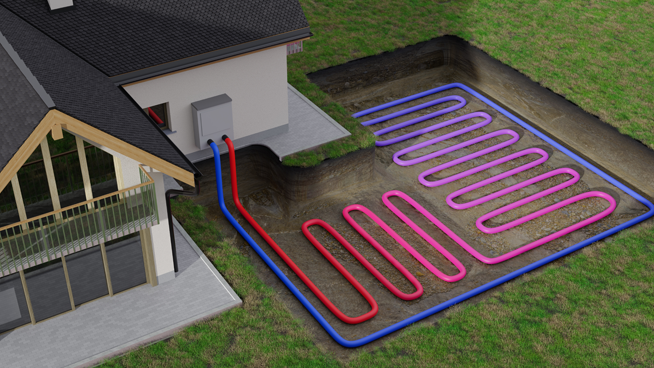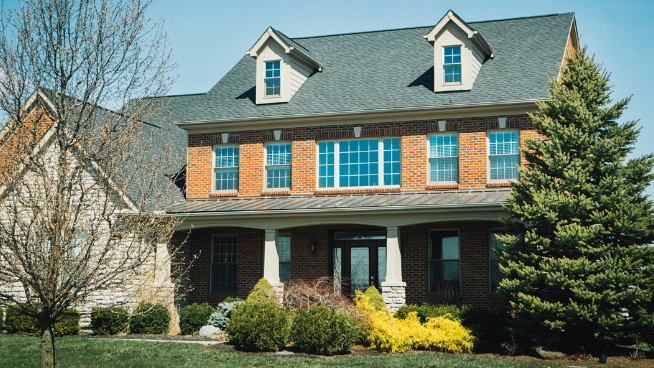
From The Detroit News | By Ken Calverley and Chuck Breidenstein
DETROIT, January 19, 2023 ~ Think of one kilowatt-hour, kWH, of electricity as the equivalent of operating 10 100-watt incandescent light bulbs for one hour.
The average cost of one kWH in the United States is around 15 cents, with a high of more than 27 cents in Hawaii to a low of 7 1/2 cents in Louisiana.
What if we told you we knew of a way to get that cost down to five cents per kWH?
According to an estimate by the US Department of Energy in 2021, a geotherm plant “built today” could generate electricity for only five cents per kWH.
PODCAST:
January 29, 2023 ~ Chuck “The Inside Guy” Breidenstein and Ken “The Outside Guy” Calverly offer the knowledge and resources you need to make the home of your dreams a reality. Catch them every Saturday and Sunday from 10 a.m. to noon on 760 WJR.
(CONTINUED) From the Roman words for “hot” and “earth,” we describe geotherm as a means of utilizing the heat generated in the core of the Earth by the decay of radioactive minerals. This heat moves constantly by conduction, from one material to another, to the Earth’s surface.
It is believed that we could supply all our electrical needs from this single source of energy. The United States is a worldwide leader in this quest, generating 26% of the total geotherm power created, which accounts for 0.3 percent of our country’s total daily energy needs.
Although the science of today uses this heat to create steam, which drives generators to create electricity, man has been utilizing this energy since the early Stone Age taking advantage of natural hot springs for bathing and, in the case of the Romans, using natural hot water to heat buildings.
Indeed, the first district heating system using geotherm was put into place in Boise, Idaho in 1892 and the first single building known to use it as a heating source was the Hot Lake Hotel in Oregon in 1907.
But geotherm has lost a lot of its initial momentum while more socially acceptable systems like wind turbines and photo-voltaic (PV) arrays have expanded as our preferred renewable generators of electricity.
Some of the glimmer created by the early use of geotherm remains in the residential construction industry, where practitioners have developed systems that can use ground source heat to warm, and even cool, our homes.
The premise for such a system in the heating cycle is that the ground is a fairly consistent temperature year-round, near 58 degrees.
Down to around 30 feet of depth, most of this heat energy actually comes from the sun above rather than decaying rocks below. A heating system for your home will have a closed loop pipe installed in the ground, which will usually contain glycol.
As the fluid is pumped through the pipe, it will pick up heat from the surrounding soils and arrive in your home at roughly 58 degrees. If you keep your winter thermostat set at 70 degrees, the system only has to “make up” for the difference of 12 degrees in the occupied areas of the home.
The difference is made up by either a gas or electric heat source, which can add some unexpected costs to system operation.
Other types of geotherm systems may cycle water from a lake or pond or use vertical wells in the ground to supply the warmed water.
In the cooling cycle, heat is extracted from the building using the process in reverse and “dumping” heat from the house into the ground.
Much like your refrigerator taking the heat out of stored foods, a heat pump in the system can either derive heat from the ground loop liquid in the winter or remove heat from the house air into the loop during the summer.
These heat pumps can work with surprising efficiency converting a BTU of supplied energy into multiple BTUs of heating or cooling energy.
The downside to these residential systems is usually higher initial cost combined with the added operational cost of supplemental heat in the winter.
For those homeowners in the Midwest looking for a return on the investment, it should be understood that the timeline for such returns is extended on geotherm systems.
As always, a well-constructed and properly insulated home is a requisite for economy, but the science of geotherm is available to us today using professionals like those you’ll find at InsideOutsideGuys.com.
***
For housing advice and more, listen to “The Inside Outside Guys” every Saturday and Sunday on 760 WJR from 10 a.m. to noon, or contact them at InsideOutsideGuys.com.
760 WJR TOP HOMELIFE STORIES:




